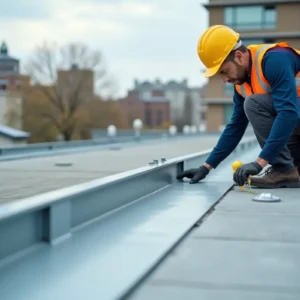Is your bathroom starting to look worn or outdated? Knowing when to replace your bathtub or shower can dramatically affect your comfort, home maintenance, and long-term savings. Many homeowners underestimate the influence of aging fixtures on their bathrooms’ appearance and safety.
Recognizing the right moment to upgrade is important; failing to address subtle warning signs can result in costly repairs and even create health risks for your family. If you’re considering a shower tub remodels but feel unsure if you need one, it pays to watch for these crucial indicators and address them promptly.
Even the most carefully looked-after bathrooms will inevitably face the effects of age. Materials degrade, seals fail, and the constant humidity of a bathroom accelerates wear and tear. Over time, this amounts to leaks, mold, and outdated functionality, which can undermine your enjoyment and the safety of your living space.
Addressing problems before they grow will keep your bathroom beautiful and functional and protect your home and family from larger and more expensive troubles later on. Taking proactive steps can help you avoid the stress of emergency repairs.
Understanding what to look for when deciding whether to replace a bathtub or shower can help you act before a small annoyance becomes a major headache. Below, we’ll explore eight telltale signs that your bathroom fixtures are no longer up to standard.
Contents
Persistent Leaks and Water Damage
Ongoing leaks can create more than just an inconvenient puddle. Repeatedly finding water on your bathroom floor, noticing ceiling stains below the shower, or feeling the floorboards buckling are warning signs that should never be ignored. Moisture damage threatens your home’s structure, leading to rotted subflooring and compromised support beams, but also creates an environment where mold and bacteria thrive.
Catching and correcting problems right away mitigates the risk of catastrophic repairs down the line. Sometimes, replacing your old tub or shower is the only effective solution, particularly if leaks stem from cracks or failing seals that can’t be reliably repaired. Untreated leaks are a leading cause of mold and mildew, making early intervention essential to maintaining a healthy home.
Mold and Mildew Growth
Constant mold and mildew indicate excess moisture in places it shouldn’t be, even when you scrub regularly. If you’ve noticed musty smells, recurring black spots on grout, or damp areas that never seem to dry, your bathroom may suffer from hidden water penetration. Mold isn’t just unsightly—it can actually harm your family’s health, especially for children, seniors, or anyone with asthma or allergies.
Repeated outbreaks, despite regular cleaning, signal that your tub or shower surface materials are deteriorating and remain damp for too long to stay hygienic. In these cases, replacement is the most reliable long-term fix, protecting both your property and the well-being of your loved ones.
Cracks, Chips, and Structural Damage
Visible cracks or chips in tubs and showers are more than cosmetic problems. Scratches and gouges allow water to penetrate the structure, which can snowball into rot behind walls, mold in hidden crevices, and weakening of floors or framing. Damaged finishes also create breeding grounds for bacteria, making cleaning more difficult and less effective.
According to HGTV, visible signs of deterioration should prompt you to consider replacement—repairing surface damage is often only temporary, and ongoing structural issues may require more extensive work. Replacing a cracked tub or shower as soon as possible can save you from greater headaches and expensive renovations in the future.
Stubborn Stains and Discoloration
Are tough stains making your bathroom look perpetually dirty? Over time, bathtubs and shower materials can develop a stubborn, unsightly film from hard water mineral deposits, soap scum, iron, and even rust. These stains sometimes seep into the finish, making them impossible to remove with regular cleaning.
No matter how much you scrub, a tub or shower that still looks dingy can drag down the appearance of your entire bathroom. If you feel embarrassed by faded or brownish spots—or if “deep cleaning” never seems to work anymore—replacing the fixture is the easiest and most effective way to restore your bathroom’s appeal in one step.
Outdated Design and Poor Functionality
If your bathroom features an older design with poor functionality, it might be time for a modern upgrade. Older tubs and showers are often shallow, uncomfortable, lack shelving, or show unattractive colors and patterns that no longer suit today’s styles. In addition, many outdated models do not have modern safety or energy-efficient features, such as slip-resistant flooring, integrated grab bars, or water-saving fixtures.
A new bathtub or shower allows you to enjoy increased comfort, improved accessibility, and additional storage options—all while boosting your home’s resale value. Upgrading to contemporary styles lets you customize your space and enjoy a bathroom tailored to your current lifestyle needs.
Fluctuating Water Temperature
Constant changes in water temperature during showers or baths may point to underlying plumbing or fixture issues. Unpredictable hot and cold bursts are not just annoying; they can sometimes be dangerous, especially for children or seniors with sensitive skin.
Older shower valves and outdated tub fixtures may not interact well with modern water systems, resulting in uncomfortable or unsafe conditions. If you’re finding it hard to maintain a steady temperature, upgrading your tub or shower can often resolve compatibility problems and make daily routines smoother and safer for everyone in your household.
High Water Bills
If your water bill rises without an obvious cause, your bathtub or shower may be the culprit. Outdated fixtures can waste significant water due to hidden leaks or inefficient designs. Swapping your old fixture for a modern, water-saving model can reduce waste, save money, and help conserve precious resources.
In fact, the savings from a more efficient shower or tub can quickly offset the installation cost. Keeping track of your utility statements—and addressing unexplained spikes—can clue you in to bathroom issues that might otherwise go unnoticed.
Safety Concerns
A bathtub or shower that’s slippery, lacks grab bars, or doesn’t suit mobility needs can be a safety hazard, particularly for seniors or people with disabilities. Inadequate safety features contribute to thousands of home accidents each year, with bathroom falls being among the most common injuries in the household.
Modern bathtubs and showers can be outfitted with anti-slip coatings, built-in handrails, lower thresholds, and custom accessibility features, ensuring a safer bathing environment. For families with members of all ages, investing in a safer fixture is an investment in everyone’s health.
Final Thoughts
Recognizing when to replace your old bathtub or shower is essential to protecting your home, health, and financial investment. Persisting leaks, mold, visible damage, stubborn stains, old design, fluctuating temperatures, high water bills, and safety concerns are all red flags.
Addressing these signs early lets you enjoy a modern, comfortable, and safe bathroom while avoiding costly surprises down the road. When these problems crop up, take them as a cue to plan your bathroom remodel—ensuring this frequently used space remains enjoyable, attractive, and functional for years.




